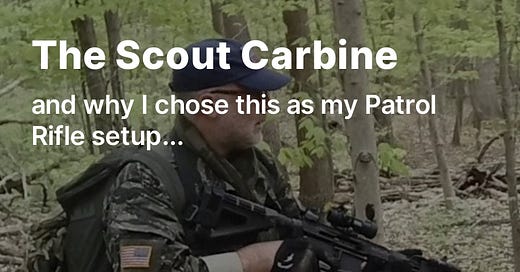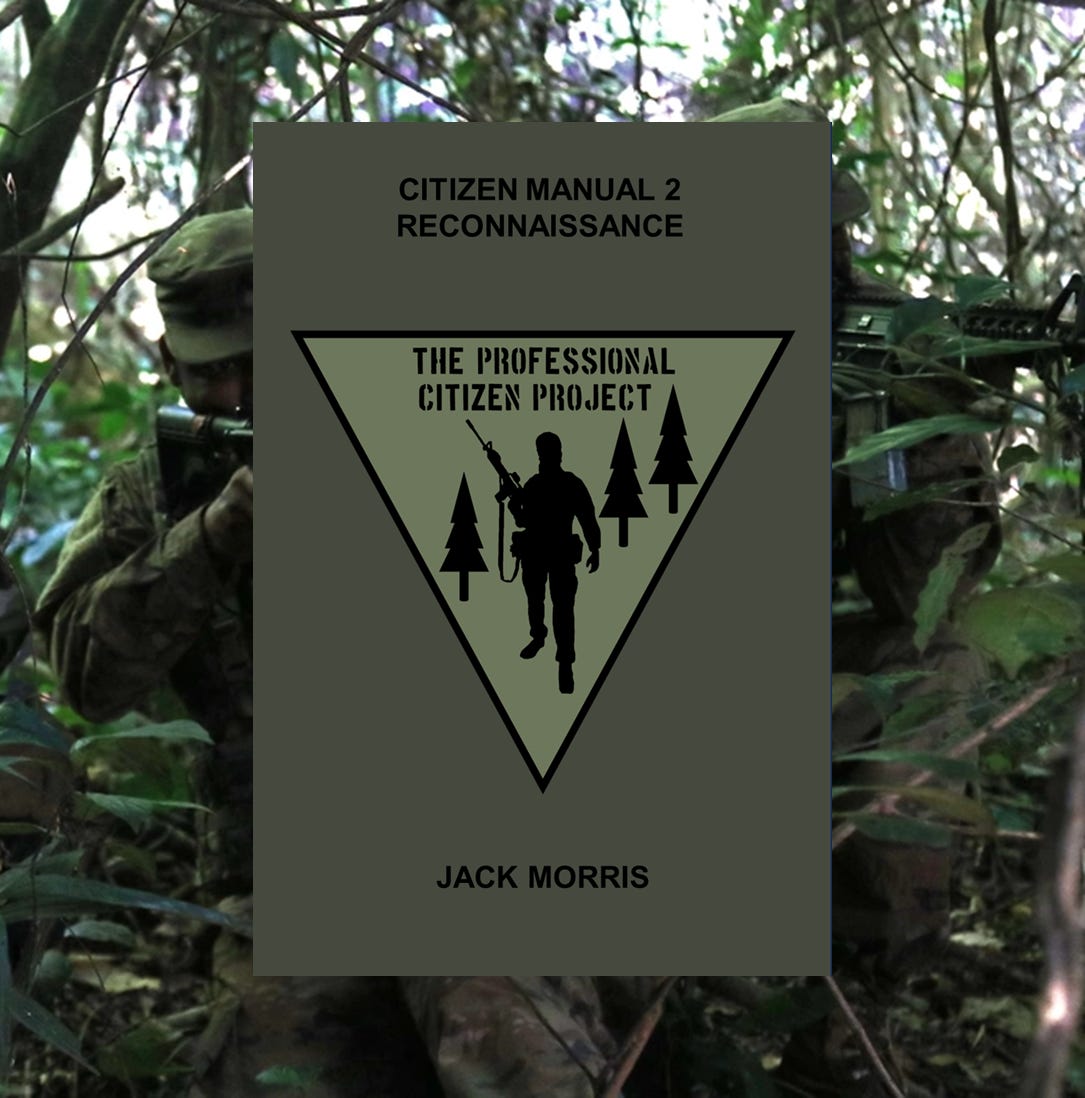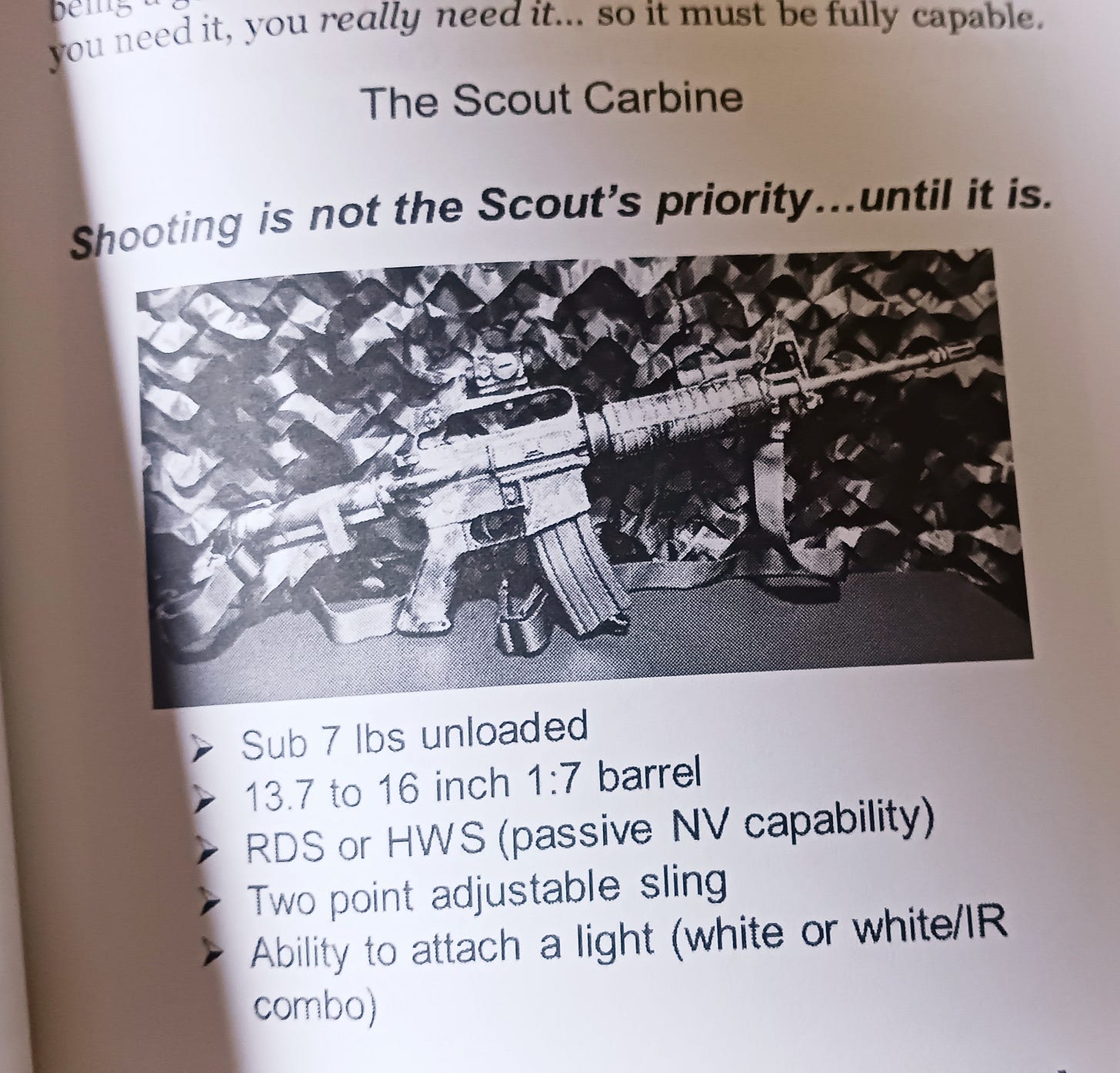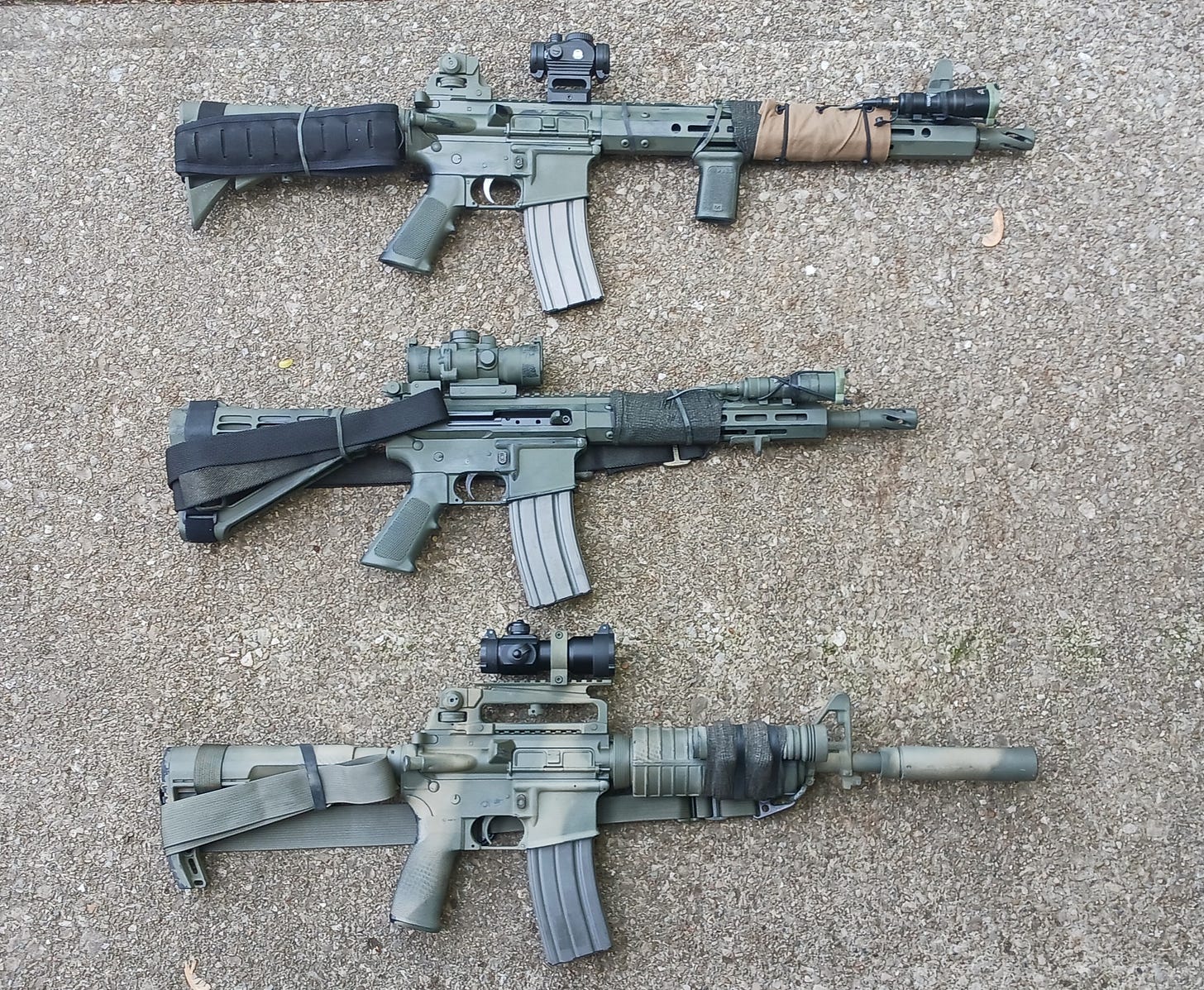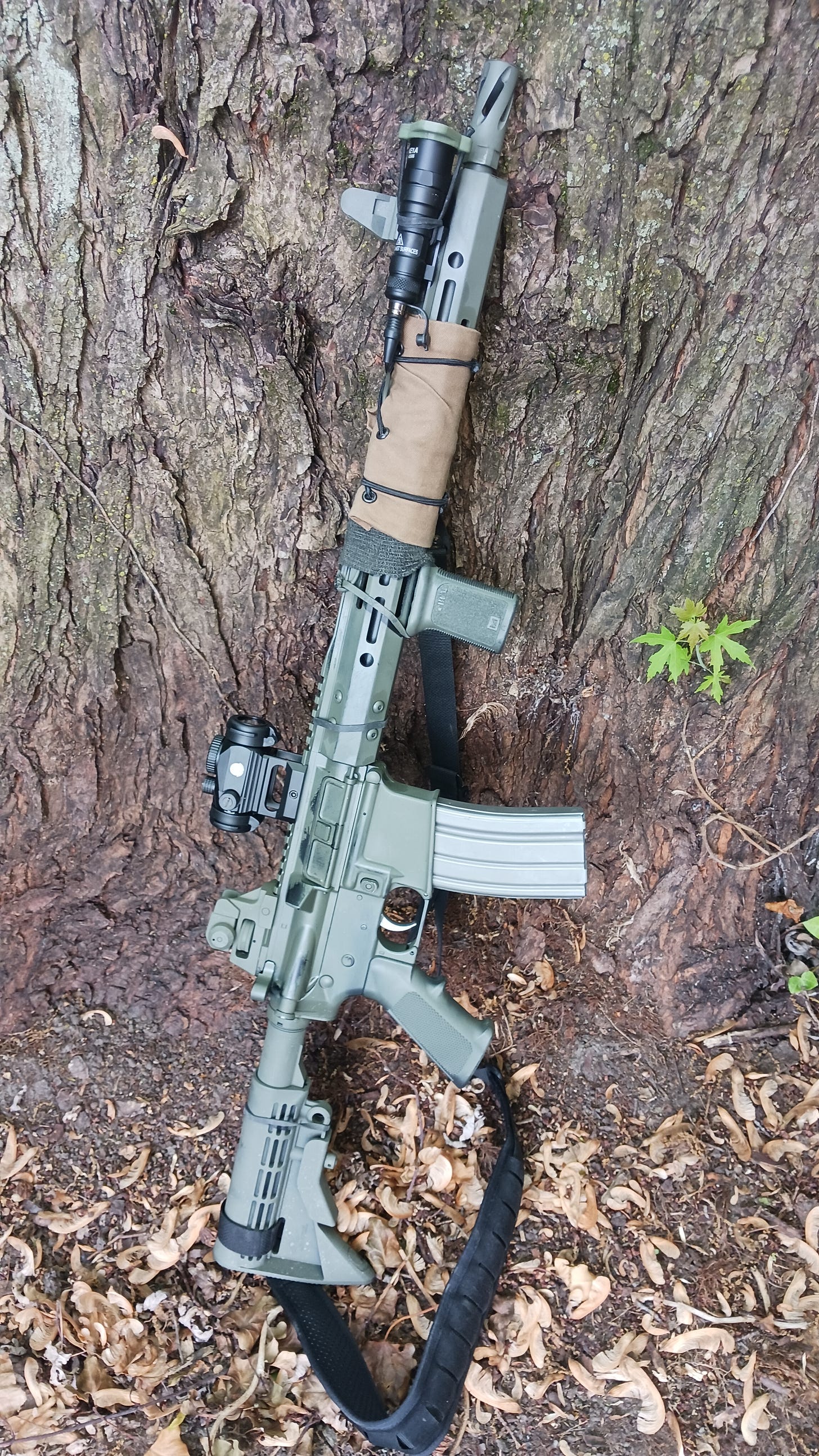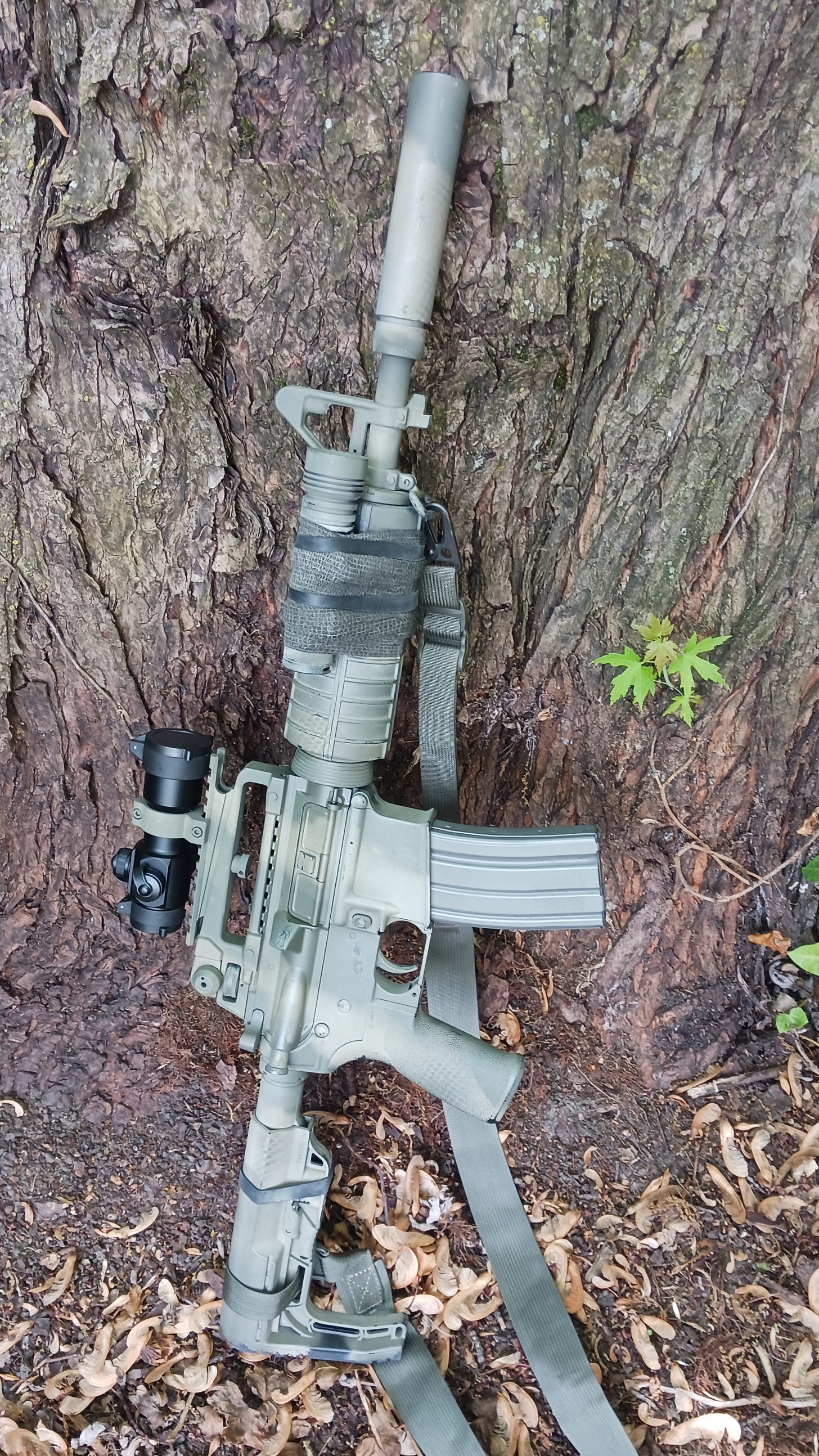The Scout Carbine concept really resonated with me when I read more about it in the CM-2 Reconnaissance book from The Professional Citizen Project.
So what is the Scout Carbine…
This rifle setup would be used for patrolling/recon work where you may be out for a day or longer, on foot, where observation is key in your mission. The whole idea of a scout is someone that is able to travel light, fast, and efficiently, and to observe and accurately report information back. So the Scout Carbine should follow this idea as well. I think we have been inundated with every gadget possible to make our rifles more effective but at the same time we may be doing the opposite.
A few years ago I embarked on this Property Patrol project because it was a scenario that we deemed to be the most realistic for a property owner (or any homestead group) to need to be able to do. And through doing this I have tried out multiple setups for rifles, gear, footwear, clothing, and more and have learned, first hand, a lot of lessons and have come to many conclusions on things. Rifle setups being one of them. So this is where the Scout Carbine concept comes into play for me…
When this project first started I was deep into the RECCE Rifle (or General Purpose Rifle) phase. The one all, do all rifle. 16” barrel, LPVO, WML, LAM and it was (and still is) a solid setup. BUT it is heavy, it can feel cumbersome, and it is actually overkill for the job I need it to perform. But it was my one and only rifle at the time so it had to do everything. But as my patrolling increased so did my need to find better ways to do things and for my area the Scout Carbine makes a lot of sense.
So what are my requirements for the Scout Carbine?
-Lightweight
-Weapon Mounted Light
-Magnified Optic
-Sling
Over the last year I have played with 3 different setups for this and this is where I am at in options…
As you can see all 3 fit most of the profile but only 1 has actually stood out as being “The One” for me to solidify its spot as my go-to Patrol setup for a Scout Carbine. So let’s briefly discuss each one and where they fell.
Rifle #1…
Lightweight (7 lbs empty), comfortable to carry, and easy to manipulate but early on the big downside was the red dot. Having magnification is paramount in the Scout Carbine. The ability to be able to PID something at 200 to 300 yards is important. Yes, you should have binoculars as part of your kit in this capacity, there are going to be a lot of times when on the move or on short halts that you will need to be able to identify something. I encountered this when about 75 yards off an abandoned railroad bed and heard a series of twigs break and while behind natural concealment I couldn’t see into the trees beyond that railroad bed. Magnification would have helped a lot in that situation. Now folks will say just add a magnifier. The downside to this is the added weight, snag hazard, and the sudden narrow field of view.
Rifle #2…
Here we decided to try a traditional AR Carbine with a carry handle mounted red dot. It was a little heavier than the first rifle coming in at 8 lbs unloaded, was still easy to manipulate and carry, and is a hoot to shoot, but we again failed at magnification. The red dot mounted on the carry handle does make passive shooting with NV easier due to the raised height of the red dot, but the lack of magnification still revealed itself out on property patrols.
Rifle #3…
Now here I decided to go a bit of a different route and go with an 11.5” AR Pistol with a 3x prism optic. Any magnified optic is going to be heavier than a red dot so the shorter barrel length made up for the magnification keeping this build right at 7 lbs unloaded. The shorter length also became a benefit when moving through thicker vegetation and for crawling into small OP/LP’s. The etched reticle can be used with or without being illuminated (so no worries about batteries dying) and the 3x magnification is just right in the eastern woodlands we are in for PID out to 300 yards. Plus the shorter barrel is still good for practical accuracy out to those mid range distances if needed. And on a side note, the side charging handle makes clearing malfunctions easier and quicker.
So for me, this has become the ideal setup for a “Scout Carbine” as it is designed and explained in Jack Morris’s book on Reconnaissance from The Professional Citizen Project.
For another article on the Scout Carbine check on this post from
on how he took cues from CM-2 as well to develop his own build.
